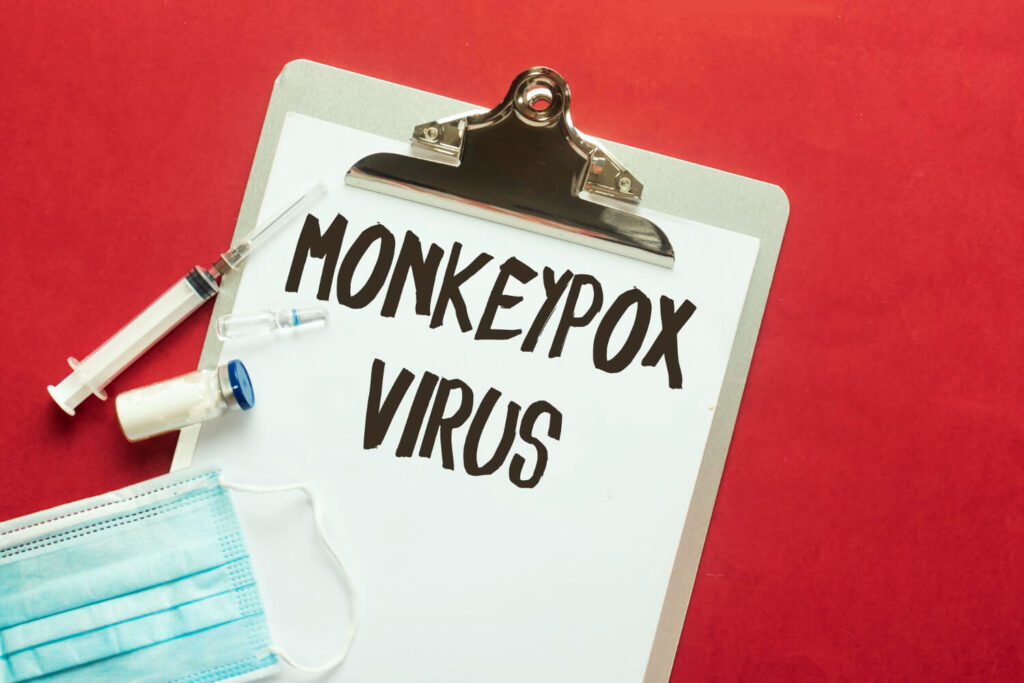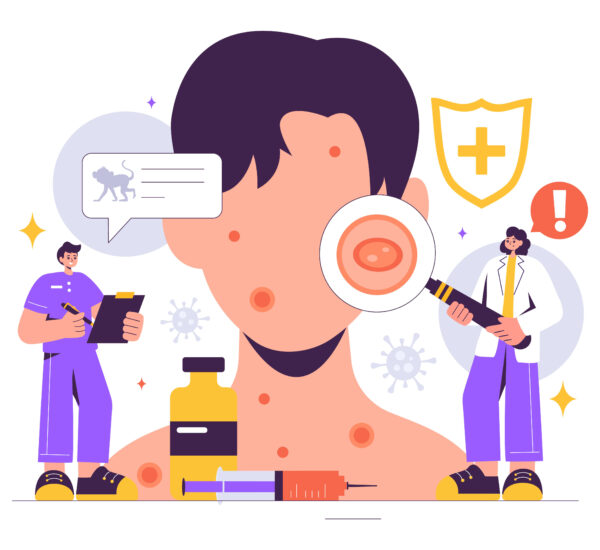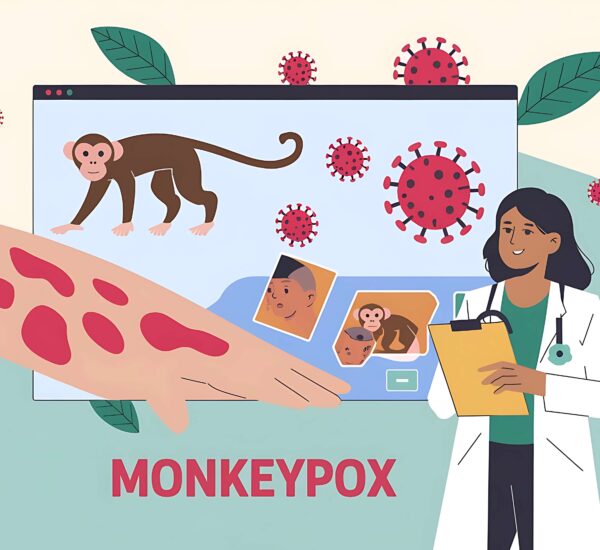Monkeypox (Mpox) has emerged as a significant public health concern globally, including in the Philippines. The outbreak of Mpox outside of West Africa and Central Africa in 2022 marked a health crisis. Thus, there is a need for immediate health intervention against Mpox as soon as possible. Fortunately, Mpox precautions are implemented to ensure comprehensive protection against the global outbreak. In this blog, we’ll uncover these methods and strategies to help safeguard against the viral infectious disease. Let’s begin!
Understanding Mpox and Its Transmission

Before delving into the strategies against Mpox spread, people must first understand the threat that this infectious disease brings to the community. Monkeypox, or Mpox is a viral zoonotic disease that can spread from animals to humans. However, recent cases of this severe disease mostly involved human-to-human transmission.
Mpox virus spreads primarily through direct contact, which includes respiratory droplets, skin-to-skin contact, sexual contact, and other physical contact. Meanwhile, indirect contact may involve touching fomites—objects or surfaces contaminated with the virus.
The incubation period for Mpox typically ranges from 1 to 21 days after being near an Mpox patient. In that case, it’s best to practice Mpox precautions to avoid contracting the disease and developing symptoms of Mpox.
Signs of Mpox

If an individual contracted the Mpox virus, the following symptoms of Mpox can occur:
- muscle aches
- swollen lymph nodes and sore throat
- fever
- chills
- severe pain
- exhaustion or low energy
- Mpox rash or skin rash (can appear on the palms of the hands, soles of the feet, chest, face, etc.)
Importance of Preventive Measures Against Monkeypox
Preventive measures against Monkeypox (Mpox) are crucial in curbing the spread of this viral infectious disease. Given its potential for human-to-human transmission, understanding and implementing Mpox precautions can significantly reduce the risk of contracting and spreading the virus within communities.
By focusing on strategies such as promoting hand hygiene, practicing respiratory etiquette, and avoiding close contact with infected individuals, individuals can play a vital role in preventing the further escalation of Mpox outbreaks.
Role of Healthcare Providers in Mpox Prevention
Healthcare providers play a pivotal role in Mpox prevention by offering guidance, treatment, and vaccination to those at risk. Their responsibilities extend beyond clinical care to include public education and community outreach. Early detection and diagnosis of Mpox cases allow for prompt isolation and treatment, thereby preventing further spread of the virus.
Vaccination programs administered by healthcare providers are crucial in protecting high-risk populations and those exposed to Mpox. Educating patients and their families about Mpox symptoms and prevention measures helps foster informed decision-making and proactive health management. Additionally, healthcare providers contribute to reporting and surveillance efforts, tracking Mpox cases to aid in controlling outbreaks. Their involvement is vital in maintaining a robust defense against the spread of Mpox.
Mpox Precautions: What You Should Know

Personal Hygiene and Sanitation Practices
Monkeypox virus can immediately manifest its occurrence when people get exposed. That’s why maintaining strict personal hygiene and sanitation practices is one of the most effective Mpox precautions. Wash hash with soap and water for at least 20 seconds to help get rid of bacteria. At the same time, using alcohol-based hand sanitizers containing at least 60% alcohol can help reduce the risk of infection.
On the other hand, if you are a Mpox patient, practicing sanitation should also be your priority. Doing so helps to protect the people around you and prevent another global outbreak of Mpox. In that case, it’s best to wear personal protective equipment (PPE) such as disposable gloves, masks, and protective clothing when isolating at home. Cleaning and disinfection activities can also significantly minimize the risk of transmission.
Safe Handling and Disposal of Contaminated Materials
Meanwhile, proper handling and disposal of contaminated materials are critical in controlling the spread of Mpox. This includes items that may come into contact with the virus, such as bedding, clothing, and medical supplies. It is important to dispose of contaminated materials in sealed plastic bags before placing them in designated waste containers.
Furthermore, avoiding the reuse of personal items like towels, clothing, or utensils with infected individuals further reduces the risk of transmission. By following these guidelines, Filipinos can effectively minimize the environmental presence of Mpox.
Implementing Social Distancing and Limiting Gatherings
Social distancing and limiting large gatherings are effective strategies to curb the spread of Mpox, especially during outbreaks. Maintaining a safe distance of at least one meter from individuals outside one’s household, particularly in crowded places, reduces the chances of direct transmission through respiratory droplets and close contact.
Limiting the size of gatherings and avoiding large events where close interactions are inevitable can significantly decrease the transmission rate of Mpox. In workplaces, implementing remote work arrangements and staggered shifts minimizes close interactions among employees. Schools can adopt remote learning or hybrid models during outbreaks to protect students and staff. By adopting these social distancing measures, Filipinos can effectively reduce the spread of Mpox within their communities.
Managing Mpox Symptoms

While preventive measures are effective for the prevention of Mpox virus, there can still be cases where people can contract Mpox. It can happen, especially if your immune system is not strong enough to combat the Mpox exposure. In that case, it’s best to seek immediate help from healthcare providers to address mild and severe symptoms of Mpox.
Treatment options for managing Mpox symptoms may involve the following:
Antiviral Drugs and Medical Treatments
While prevention is paramount, having effective treatment options available is equally important in managing Mpox cases. Antiviral medications have shown efficacy in reducing the severity and duration of Mpox symptoms. These medications work by inhibiting the virus’s ability to replicate, thereby limiting its spread within the body.
Moreover, supportive care, including pain relievers, hydration, and wound care, is essential in alleviating symptoms and promoting recovery. In severe cases, hospitalization may be required for intensive care and monitoring to prevent further complications.
Psychological Support
Addressing the psychological impact of Mpox is crucial for maintaining overall community well-being, especially during outbreaks. The fear and uncertainty surrounding infectious diseases can lead to anxiety, stress, and other mental health challenges. Providing access to mental health services, including counseling and support groups, helps individuals cope with the emotional burden of Mpox.
Frequently Asked Questions
How to confirm if I have Mpox?
One way to determine that you have Mpox is through Mpox testing. To confirm the presence of Mpox, individuals can undergo Mpox testing. This diagnostic procedure helps identify the virus in the body, enabling timely intervention and treatment. If symptoms persist or worsen, seeking medical advice and testing is crucial for accurate diagnosis and appropriate care. Stay vigilant and prioritize your health by staying informed and proactive in managing Mpox concerns.
Can warm baths help manage Mpox lesions?
While warm baths can provide temporary relief for Mpox lesions by soothing discomfort and promoting healing, they are not a substitute for medical treatment. It’s important to consult healthcare providers for proper wound care to prevent infection and promote faster recovery. Remember to follow medical advice and treatment protocols for effective management of Mpox symptoms.
Can Mpox affect the health of pregnant people?
Yes, Mpox can pose health risks for pregnant individuals, potentially leading to complications such as miscarriage or birth defects. Pregnant people with Mpox or those exposed to the virus must seek immediate medical attention for proper evaluation to safeguard both maternal and fetal health. Regular prenatal care and monitoring are essential for ensuring the best possible outcomes during pregnancy while dealing with Mpox.
Are skin lesions contagious?
Skin lesions associated with Mpox can be contagious, especially if they are oozing or open. It is important to practice good hygiene, such as washing hands frequently and avoiding direct contact with the affected areas to prevent the spread of the virus to others. Additionally, individuals with Mpox lesions should follow medical advice on wound care and take necessary precautions to minimize the risk of transmission to others. By practicing proper hygiene and seeking medical care, one can help reduce the likelihood of spreading Mpox.
Conclusion
While vaccination is a cornerstone in preventing Mpox, adopting a multifaceted approach that includes comprehensive Mpox precautions is essential for effective control and prevention. By understanding the virus, maintaining strict hygiene practices, and ensuring proper handling of contaminated materials, Filipinos can significantly reduce the risk of Mpox transmission.
Embracing these essential Mpox prevention methods beyond vaccination not only protects individual health but also contributes to the well-being of the entire community. Stay informed, stay vigilant, and take proactive steps to safeguard against the threat of Monkeypox today.
For a thorough book an online consultation with an infectious disease doctor!



